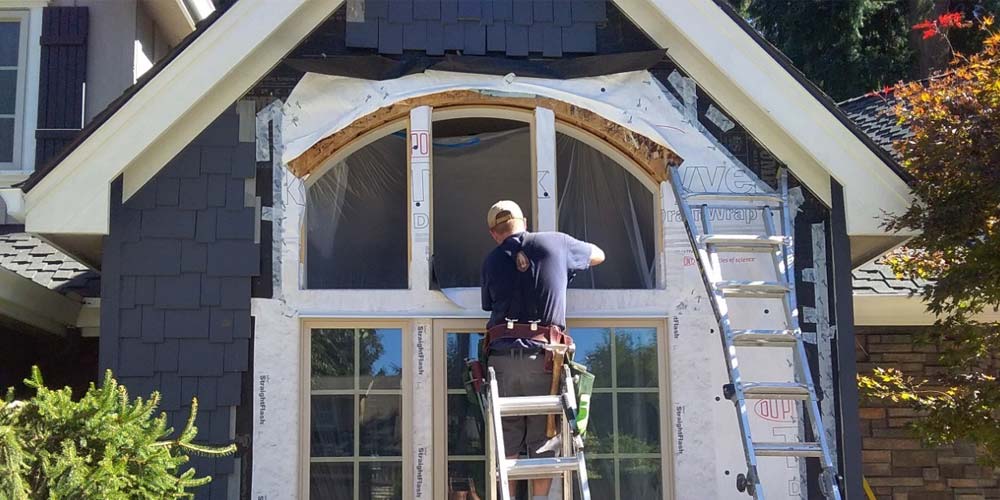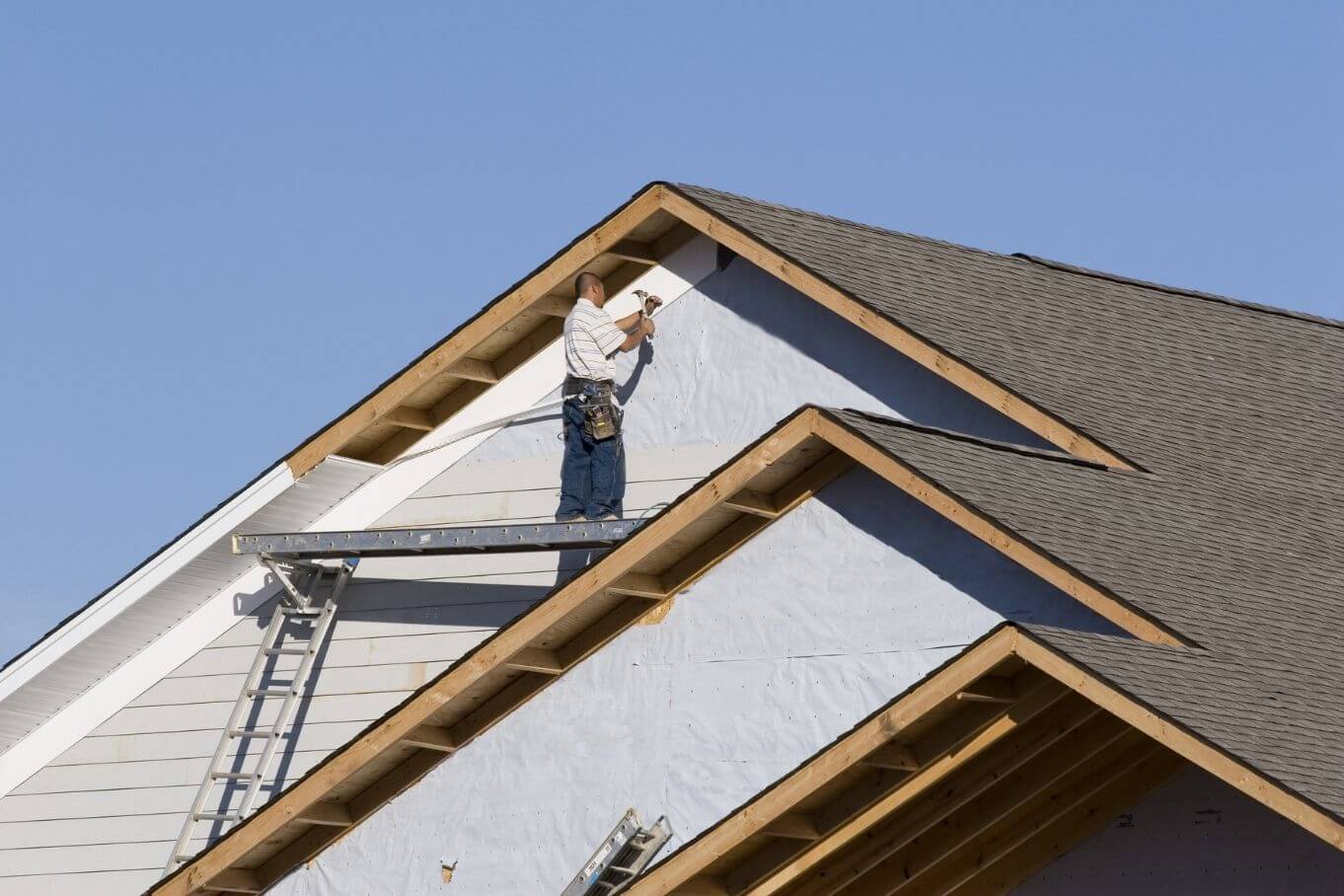The Important Overview to the Various Kinds Of House Siding and Their One-of-a-kind Advantages
In the world of home improvement, choosing the best home siding is an essential choice that impacts both visual allure and useful performance. The range of products available, such as timber, plastic, fiber brick, cement, and metal, each offer distinct advantages that provide to different requirements and choices. Comprehending these differences can significantly improve the long life and worth of a home - morris siding contractor. With so several options to consider, which exterior siding material absolutely stands out for your certain job? Checking out these selections can bring about notified choices that align with both style and usefulness.
Wood Siding
Wood siding, a preferred choice for residential outsides, offers a classic aesthetic that combines natural appeal with structural stability. This house siding product is readily available in various designs, consisting of clapboard, roof shingles, and board-and-batten, allowing property owners to personalize their appearance to match their layout choices. Wood house siding is typically crafted from resilient species such as cedar, redwood, or ache, which are understood for their resilience and capacity to endure environmental stressors.
One of the primary advantages of wood exterior siding is its excellent insulation residential properties, which can add to power efficiency and reduced home heating expenses. Additionally, timber home siding is eco-friendly, making it an environmentally friendly option when sourced sustainably. Regular maintenance, including paint or discoloration, can lengthen its life expectancy and enhance its look, allowing house owners to maintain the all-natural charm of the timber.
Nonetheless, possible drawbacks include sensitivity to insects, rot, and weather damages, requiring adequate therapy and upkeep - morris siding contractor. Despite these issues, when properly taken care of, timber siding can supply a resilient and lovely solution that enhances the character of a home while using a cozy, welcoming atmosphere

Plastic Home Siding
Vinyl house siding has become a leading option for homeowners looking for a low-maintenance exterior alternative that integrates resilience and cost. This versatile product is crafted from polyvinyl chloride (PVC), making it resistant to different weather, including moisture and UV rays. Consequently, vinyl house siding does not warp, rot, or fade, making certain lasting visual appeal.
Among the primary benefits of plastic siding is its substantial range of shades and styles, allowing home owners to achieve the preferred appearance for their residential property without the need for regular repainting. In addition, vinyl exterior siding is very easy to install, which can significantly decrease labor prices throughout construction or restoration tasks.
Plastic house siding also adds to power performance. Several options feature insulation backing, which boosts thermal performance, helping to keep comfy interior temperature levels and potentially lowering energy expenses. In addition, its smooth surface area facilitates very easy cleaning, requiring only periodic washing with a garden hose pipe to eliminate dust and debris.
Fiber Concrete Siding
Fiber concrete house siding has gotten grip among house owners and building contractors alike as a result of its amazing combination of sturdiness and aesthetic versatility. Made up of a combination of cellulose, concrete, and sand fibers, this exterior siding alternative is engineered to withstand severe climate condition, including high winds, heavy rainfall, and temperature fluctuations, making it a resilient selection for household exteriors.
Among the main advantages of fiber cement siding is its resistance to pests, such as termites, and its non-combustible nature, offering improved fire safety. morris siding contractor. Furthermore, it is readily available in a large array of designs, colors, and structures, allowing homeowners to accomplish their wanted aesthetic without compromising efficiency
An additional benefit is its reduced maintenance demands; fiber concrete siding commonly requires painting or discoloration every 5-10 years, which is less regular than various other products. Additionally, its durability adds to a reduced total cost of ownership, as it minimizes anonymous the demand for constant repairs or replacements.
Inevitably, fiber concrete siding represents an outstanding investment for those looking for a durable, appealing, and flexible outside choice, incorporating both kind and feature to boost the home's visual charm.
Steel Home Siding
The attraction of steel home siding lies in its robust resilience and contemporary aesthetic appeal, making it a favored selection for modern style. Available in products such as light weight aluminum and steel, steel house siding uses a variety of surfaces and colors, permitting homeowners to attain this contact form a tailored look that complements their design vision.

Power efficiency is another significant advantage, as numerous metal siding items are created with insulation options that aid manage indoor temperature levels. This can cause minimized energy expenses gradually. Furthermore, metal home siding is commonly recyclable, making it an eco-friendly option for sustainability-minded home owners.
The setup process for metal exterior siding can be relatively straightforward, causing a quicker turn-around time for construction projects. In general, metal siding integrates capability and design, making it a useful option for those seeking a long-lasting and aesthetically attractive outside surface.
Brick and Rock Home Siding
Brick and stone house siding sticks out as an ageless selection that improves the aesthetic charm of any kind of home. Understood for their resilience and reduced upkeep, these products offer an outstanding roi while raising the home's aesthetic allure. Readily available in numerous colors, appearances, and patterns, block and rock can be customized to suit diverse building styles, from typical to modern.
One of the main benefits of brick and stone house siding is their energy effectiveness. Both products possess natural shielding residential properties that help control interior temperature levels, potentially minimizing home heating and cooling costs. Furthermore, click here now they offer exceptional fire resistance contrasted to various other house siding options, contributing to improved safety and security.
An additional benefit is their longevity. Brick and rock can last for years, usually requiring minimal upkeep beyond periodic cleaning. Unlike wood exterior siding, they are unsusceptible parasites and rot, ensuring a lasting exterior that endures the components.
Final Thought
In summary, the option of exterior siding considerably influences a home's visual appeal, power effectiveness, and maintenance needs. Each type of house siding-- whether wood, plastic, fiber block, cement, or metal and stone-- uses special benefits customized to various property owner choices and environmental problems.
One of the primary benefits of wood home siding is its superb insulation residential properties, which can contribute to power performance and lower home heating prices. Furthermore, wood exterior siding is naturally degradable, making it an eco friendly choice when sourced sustainably.One of the key benefits of metal home siding is its resistance to different ecological aspects.Power efficiency is one more substantial advantage, as numerous steel exterior siding products are created with insulation alternatives that help regulate indoor temperature levels. Each type of house siding-- whether timber, vinyl, fiber brick, metal, or concrete and stone-- supplies one-of-a-kind benefits tailored to various property owner preferences and ecological conditions.